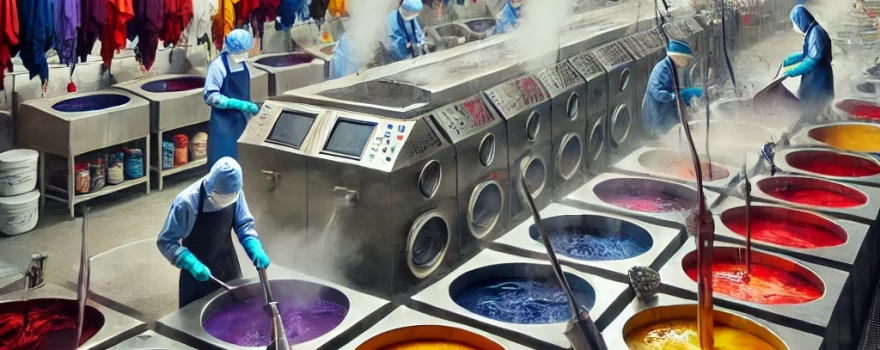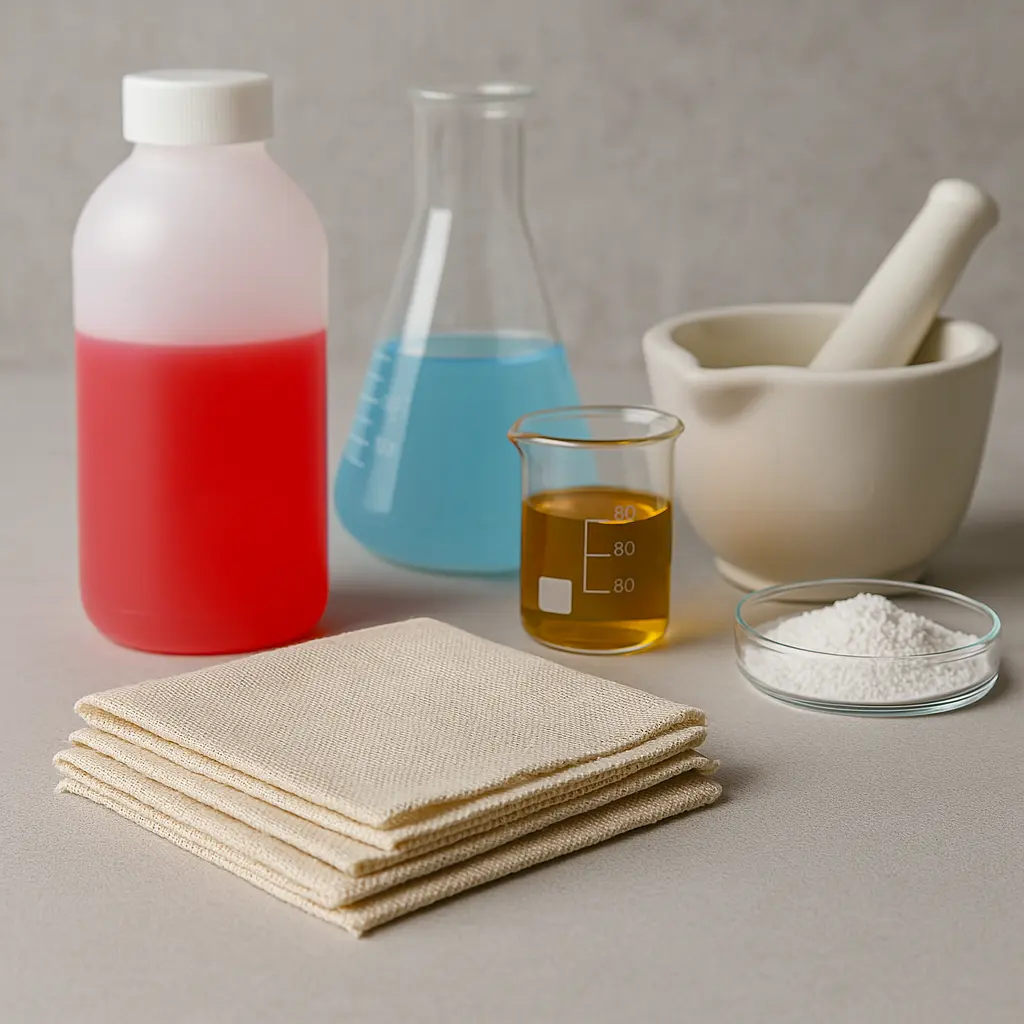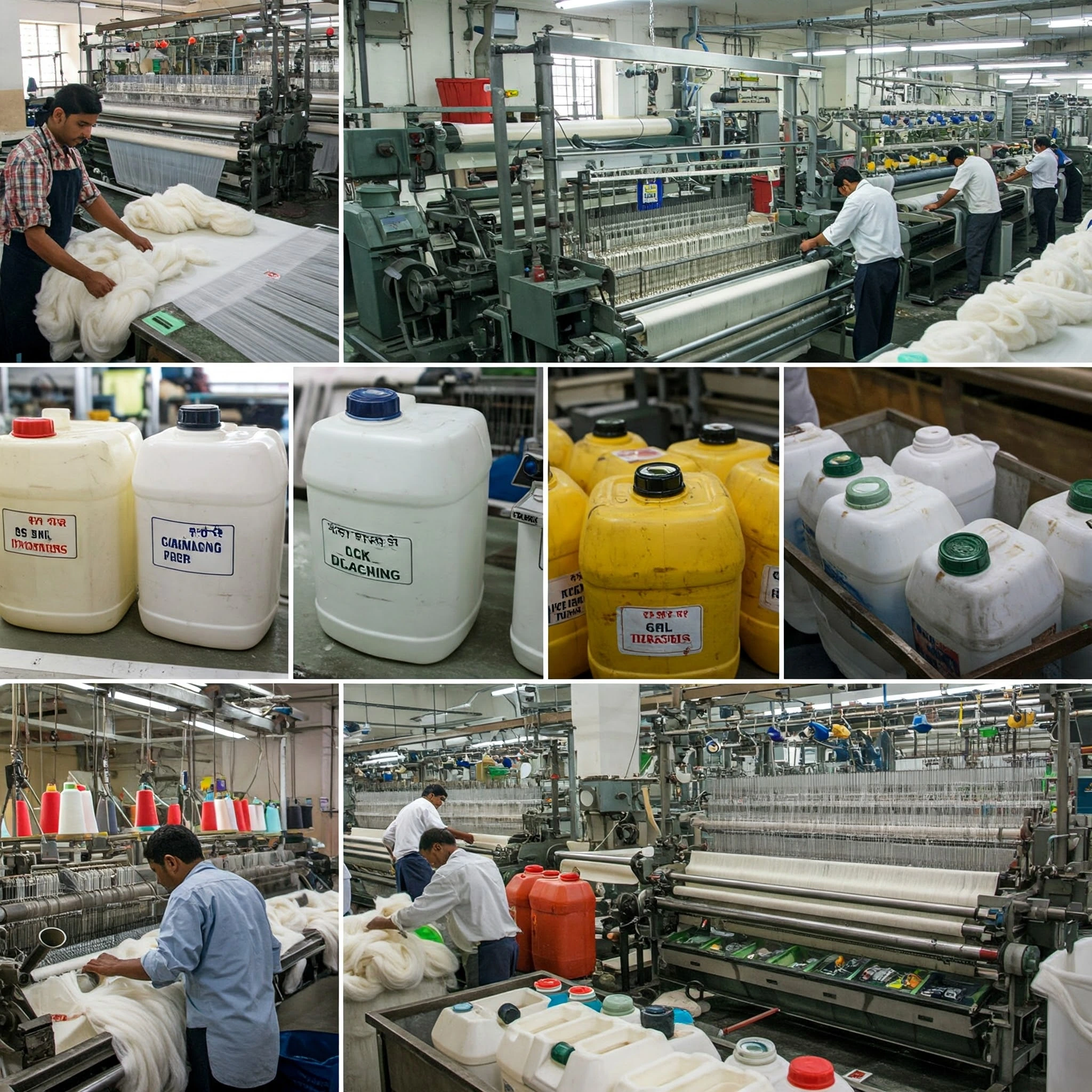
Table of Contents
Construction and Textile Chemicals
The Importance of Chemicals in Construction and Textile Industries
Construction and textile chemicals represent critical inputs for industrial processes. These substances contribute fundamental characteristics to end products. For instance, concrete admixtures enhance structural integrity. Similarly, textile dyes and finishes augment fabric quality. These materials transcend the role of basic ingredients. They drive advancements in production. Their significance is often underestimated. Without these chemical agents, the fabrication of resilient structures and aesthetically refined textiles would be compromised. An examination of the roles these chemicals play in shaping industrial outcomes is warranted.
Key Construction Chemicals and Their Role in Building Materials
Several chemical categories impact building material performance. Admixtures, for instance, modify concrete properties. They can accelerate or retard setting times. Sealants and adhesives provide bonding and waterproofing. Curing compounds regulate moisture loss. This is vital for concrete strength. Polymers enhance flexibility and durability in various materials. Let’s break down some critical chemicals:
- Admixtures:
- Accelerators: Speed up concrete setting.
- Retarders: Slow down setting, useful in hot weather.
- Plasticizers: Increase workability with less water.
- Superplasticizers: Allow for highly fluid concrete.
- Sealants and Adhesives:
- Silicones: Offer flexibility and weather resistance.
- Polyurethanes: Provide strong bonds and durability.
- Epoxies: Create high-strength, chemical-resistant bonds.
- Curing Compounds:
- Acrylic-based: Form a protective film.
- Wax-based: Retain moisture effectively.
- Polymers:
- Acrylics: Improve paint and coating properties.
- Vinyls: Enhance flexibility in flooring and pipes.
These chemicals serve more than merely as additives; they are essential for the creation of durable and secure structures.
Enhancing Strength and Durability with Advanced Construction Additives
Advanced construction additives transform ordinary building materials. How? They improve performance dramatically. Consider strength. Durability. Workability. These additives are the secret weapons of modern construction. They push the boundaries of what’s possible. High-performance concrete, for example, relies on superplasticizers. These reduce water content. This leads to denser, stronger concrete. Fiber reinforcement adds tensile strength. It prevents cracks. Corrosion inhibitors protect steel in concrete. This extends the lifespan of structures. Let’s look at some examples:
- Superplasticizers: Allow for low water-to-cement ratios. This increases compressive strength.
- Fiber Reinforcement: Distributes stress. This prevents crack propagation.
- Corrosion Inhibitors: Form a protective layer around steel. This blocks chloride ions.
- Shrinkage-Reducing Admixtures: Minimize drying shrinkage. This reduces cracking.
- Rheology Modifiers: Control the flow properties of concrete. This improves placement and finishing.
These additives aren’t just extras. They’re essential for building structures that last. They withstand harsh conditions. They perform reliably over time.
Essential Textile Chemicals for Fabric Processing and Performance
Textile chemicals are the unsung heroes of fabric creation. They breathe life into raw materials. They dictate the final product’s feel, look, and function. Think about it. Dyes bring color. Finishes add texture. Softeners improve comfort. Without these chemicals, our clothes would be dull and lifeless. They are crucial for consistent quality and performance. Let’s explore some key categories:
- Dyes and Pigments:
- Reactive dyes: Bond chemically to fibers for lasting color.
- Disperse dyes: Used for synthetic fibers like polyester.
- Pigments: Provide color to a wide range of fabrics.
- Finishing Agents:
- Softeners: Enhance fabric feel.
- Resin finishes: Improve wrinkle resistance.
- Water repellents: Protect against moisture.
- Flame retardants: Increase fabric safety.
- Auxiliary Chemicals:
- Wetting agents: Improve dye penetration.
- Leveling agents: Promote even color distribution.
- Fixing agents: Enhance color fastness.
- Pretreatment Chemicals:
- Desizing agents: Remove sizing from yarns.
- Scouring agents: Clean fibers from impurities.
- Bleaching agents: Whiten fabric.
These chemicals are more than just additives. They are vital for producing textiles that meet modern demands. They contribute to durability, aesthetics, and functionality. They are essential to the textile industry.
Improving Fabric Quality and Functionality with Specialized Chemical Treatments
Specialized chemical treatments elevate fabric performance. They address specific needs. They push fabrics beyond their natural limits. Think of wrinkle-free shirts. Or water-resistant jackets. These advancements are possible through precise chemical applications. These treatments are not a luxury. They are a necessity for modern textiles. They meet the demands of consumers. Let’s examine some examples:
- Anti-Microbial Treatments:
- Silver-based: Inhibit bacterial growth. Useful for sportswear and medical textiles.
- Chitosan-based: Natural, biodegradable option. Provides odor control.
- UV Protection:
- UV absorbers: Block harmful rays. Protect fabric and skin.
- Titanium dioxide: Offers high levels of UV protection.
- Easy-Care Finishes:
- Wrinkle-free: Reduce ironing needs. Improve garment appearance.
- Soil release: Make stains easier to remove.
- Performance Finishes:
- Moisture-wicking: Transport sweat away from the body.
- Flame resistance: Protect against fire hazards.
These treatments transform ordinary fabrics. They add valuable properties. They create textiles that are comfortable, durable, and safe. They are the key to innovation in the textile industry.

Eco-Friendly Solutions in Construction and Textile Chemical Applications
The drive for sustainability reshapes chemical applications. Both construction and textile industries are adapting. Green solutions are no longer optional. They are vital. Imagine buildings with reduced carbon footprints. Picture textiles made with minimal environmental impact. This shift is crucial. It addresses growing concerns. What are some eco-friendly approaches?
- Construction:
- Bio-based admixtures: Replace traditional chemicals with natural alternatives.
- Recycled materials: Use of fly ash and slag in concrete.
- Low-VOC sealants and adhesives: Minimize harmful emissions.
- Geopolymer concrete: Reduces reliance on cement.
- Textiles:
- Natural dyes: Employ plant-based and mineral colors.
- Organic fibers: Use cotton, linen, and hemp grown without pesticides.
- Enzyme-based treatments: Replace harsh chemicals in fabric processing.
- Closed-loop water systems: Reduce water consumption and pollution.
These solutions are not just trends. They are necessities. They promote a healthier planet. They ensure a sustainable future for these industries.

The Evolving Landscape of Construction and Textile Chemicals
The landscape of construction and textile chemicals is dynamic, propelled by technological advancements, regulatory shifts, and evolving consumer preferences. This constant motion necessitates innovation. We witness a strong push for sustainable solutions, improved performance, and heightened efficiency. Nanotechnology, for instance, facilitates the creation of materials with exceptional properties, such as self-healing concrete and responsive smart textiles. Digital printing and advanced dyeing techniques are revolutionizing textile production, minimizing waste and enabling intricate designs. The growing adoption of sustainable, bio-based chemicals signifies a critical industry trend. To remain relevant, the chemical sector must embrace change and prioritize innovation. This evolution extends beyond product development, signifying a fundamental shift in industry mindset.

